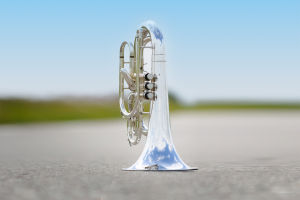
Horn instruments have been around for centuries, serving as both musical tools and symbols of power and communication. From the simple animal horns used in ancient times to the sophisticated brass instruments of today, these instruments have evolved in remarkable ways.
Whether you're listening to the rich tones of a classical horn section in an orchestra or the bold blasts of a brass band, horn instruments remain an integral part of the music world. Let’s explore the history, types, and role of these instruments in different musical genres.
Sounds of the Trumpet, Trombone, and French Horn.
video by Brass Sisters
The History of Horn Instruments
The origins of horn instruments can be traced back to prehistoric times when early humans used animal horns to signal or communicate over long distances. These early horns, made from the horns of animals such as cows and goats, were simple but effective tools. Over time, horn instruments became more refined, especially in ancient civilizations such as Egypt and Greece, where they were often used in ceremonial contexts.
During the Middle Ages, horns made of metal, like the Roman cornu, were used in both battlefields and courts, symbolizing power and prestige. The modern brass horn, as we know it today, evolved in the 17th century when craftsmen started developing instruments that could produce a wider range of notes and were more versatile in performance.
Types of Horn Instruments
Horn instruments come in many forms, but the most well-known types are brass horns, including French Horn, Trumpet, Trombone, and Tuba. Each of these instruments has unique characteristics and plays a distinct role in various music genres.
French Horn: Known for its deep, mellow sound, the French horn has a large, coiled tube that helps produce its distinctive tone. It’s commonly used in orchestras and is famous for its ability to play both soft, lyrical passages and loud, dramatic fanfares.
Trumpet: The trumpet is one of the most versatile horn instruments, capable of playing both bright, powerful notes and softer, more delicate ones. It’s used in a wide range of musical genres, from classical orchestras to jazz bands and brass ensembles.
Trombone: Recognizable by its long slide, the trombone has a unique ability to create smooth gliding pitches, called glissandos. It’s often used in both symphonic and popular music, adding richness to brass sections.
Tuba: The tuba is the largest brass instrument and provides the deep, resonant foundation in brass ensembles. Its low tones are essential for balancing the higher-pitched instruments and creating harmony.
These instruments are all part of the brass family and produce their sound through buzzing lips against a metal mouthpiece. While the design of each horn differs, they all rely on the same fundamental principles of sound production.
The Role of Horn Instruments in Music
Horn instruments have played a key role in both classical and modern music. In orchestras, horns are often used to create majestic, heroic themes, providing both strength and beauty to the music. The powerful sound of the French horn can evoke emotions ranging from solemnity to excitement, making it a favorite in symphonic compositions.
In jazz, brass instruments like the trumpet and trombone are essential for improvisation, helping musicians create spontaneous, expressive performances. Jazz bands often feature brass sections that add a dynamic, energetic element to the music.
Beyond orchestras and jazz, horn instruments are found in marching bands, brass quintets, and even pop music, demonstrating their versatility and enduring popularity across genres.
Modern Innovations and the Future of Horn Instruments
While horn instruments have a rich history, they continue to evolve. Today, musicians and instrument makers are experimenting with new materials and technologies to improve the sound quality and playability of these instruments. Innovations in valve systems, for example, have made it easier to play more complex notes and improve tuning accuracy.
Additionally, horn instruments are now being used in modern music styles like electronic music and film scores, bringing a fresh twist to traditional sounds. The adaptability of horn instruments ensures that they will remain relevant and continue to inspire musicians for generations to come.
A Sound That Endures
Horn instruments are a testament to the enduring power of music. From their ancient origins to their modern-day innovations, they’ve played an essential role in shaping the world of music. Whether in a concert hall, a jazz club, or a movie soundtrack, the sound of a horn instrument is always unmistakable.So the next time you hear a trumpet blast or a French horn’s rich, mellow tones, take a moment to appreciate the long history and ongoing evolution of these incredible instruments.

